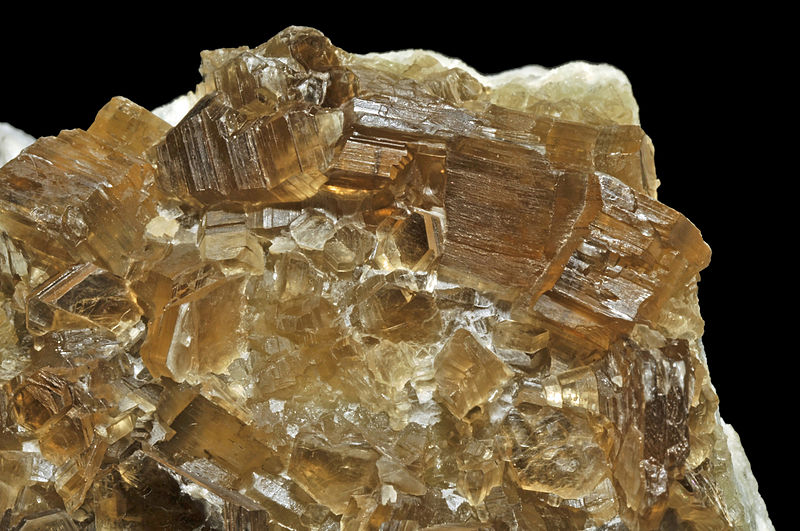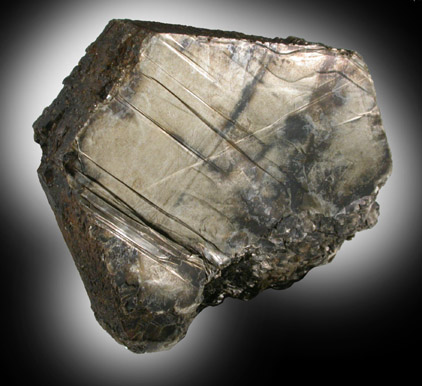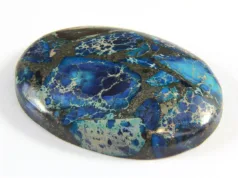

Phlogopite is a member of mica group family of phyllosilicates mineral. Color is a yellow, greenish, or reddish-brown. It is the magnesium endmember of the biotite stable answer series, with the chemical formulation KMg3AlSi3O10 (F, OH) 2. Iron substitutes for magnesium in variable quantities main to the more commonplace biotite with higher iron content. For physicaly and optical identification, it shares most of the feature of biotite.
An extensive-unfold member of the mica group occurring particularly in crystalline, dolomitic marbles associated with spinel, diopside and members of the chondrodite organization. Redefined as the OH give up-member via the IMA Mica Subcommittee in 1998.
May additionally alter to vermiculite.
Name: From the Greek for firelike, referring to an oft-seen reddish tint.
Association: Dolomite, calcite, diopside, tremolite, scapolite, vesuvianite, apatite, titanite, epidote, olivine, augite, magnetite.
Polymorphism & Series: 1M, 2M1 ; 3A polytypes; forms a series with biotite
Mineral Group: Mica group
Crystallography: Monoclinic; prismatic. Usually in six-sided plates or in tapering prismatic crystals. Crystals frequently large and coarse. Found also in foliated masses
Phlogopite Composition: A hydrous potassium magnesium aluminum silicate, KMg2Al2Si3Oio(OH)2. Usually contains about 3 percent of fluorine and some iron.
Diagnostic Features: Characterized by its micaceous cleavage and yellowish brown color. Distinguished from muscovite by its decomposition in sulfuric acid and from biotite by its lighter color. But it is impossible to draw a sharp distinction between biotite and phlogopite.
Phlogopite Uses: Same as for muscovite; chiefly as electrical insulator.
Chemical Properties
| Chemical Classification | Phyllosilicates, Mica |
| Formula | KMg3(AlSi3O10)(F,OH)2 |
| Common Impurities | Mn,Ba,Cr,Na,Ti,Ni,Zn,Ca,Li,Rb,H2O |
Phlogopite Physical Properties
| Crystal habit | Tabular, scaly masses, rarely perfect phenocryst tablets |
| Color | Brownish red, dark brown, yellowish brown, green, white |
| Streak | White |
| Luster | Vitreous, Pearly |
| Cleavage | Perfect on {0001} |
| Diaphaneity | Transparent, Translucent |
| Mohs Hardness | 2 – 3 |
| Crystal System | Monoclinic |
| Tenacity | Flexible |
| Density | 2.78 – 2.85 g/cm3 (Measured) 2.79 g/cm3 (Calculated) |
| Fracture | Micaceous |
| Other characteristics | Fluorescent |
Phlogopite Optical Properties
| Color / Pleochroism | Visible |
| 2V: | Calculated: 16° to 20° |
| RI values: | nα = 1.530 – 1.573 nβ = 1.557 – 1.617 nγ = 1.558 – 1.618 |
| Twinning | Composition twinning |
| Optic Sign | Biaxial (-) |
| Birefringence | δ = 0.028 – 0.045 |
| Relief | Moderate |
| Dispersion: | r < v distinct |
Occurrence of Phlogopite
Phlogopite occurs as a product of metamorphism in crystalline magnesium limestones or dolomitic marbles and is also found in serpentine. Rarely found in igneous rocks. Notable localities are in Finland; Sweden; Campolungo, Switzerland; Ceylon; Madagascar. In the United States found chiefly in Jefferson and St. Lawrence Counties, New York. Found abundantly in Canada in Ontario at North and South Burgess, and in various other localities in Ontario and Quebec.
Distribution
Some localities for well-crystallized material include:
- In the USA, from Antwerp and Natural Bridge, Jefferson Co., and Edwards and Pierrepont, St. Lawrence Co., New York; from Franklin, Sussex Co., New Jersey.
- In Canada, large crystals from the Lacey mine, Frontenac Co., and in North and South Burgess Townships, Ontario; from near Perkin’s Mills, and elsewhere in Gatineau Co., Quebec.
- In the Slyudyanka region, near Lake Baikal, Siberia, Russia.
- At near Feset, Norway.
- From Campolungo, near St. Gotthard, Ticino, Switzerland.
- In the Val di Fassa, Trentino-Alto Adige, and on Monte Braccio, Val Malenco, Lombardy, Italy.
- From Saharakara and Ampandrandava, Madagascar.
- At Anxiety Point, Nancy Sound, New Zealand.
References
- Bonewitz, R. (2012). Rocks and minerals. 2nd ed. London: DK Publishing.
- Dana, J. D. (1864). Manual of Mineralogy… Wiley.
- Handbookofmineralogy.org. (2019). Handbook of Mineralogy. [online] Available at: http://www.handbookofmineralogy.org [Accessed 4 Mar. 2019].
- Mindat.org. (2019): Mineral information, data and localities.. [online] Available at: https://www.mindat.org/ [Accessed. 2019].A




































